News
more- 2024年4月26日更新
- Updated " Research results "
"3GeV-class synchrotron radiation facility" in Japan
Japanese government is now building "3GeV-class synchrotron radiation facility" at Aobayama new campus of Tohoku University.
It is a high brilliance light source by an electron accelerator system combined with a linac and a 3GeV storage ring, which covers the spectral regions from VUV to hard X-rays. The key concept of this facility is advanced and stable light source to create innovations in science and technology.
This project was started in 2019 and scheduled to operate in 2023. At the beginning 10 beamlines will be operating. The project is driven by collaboration between QST and the partner with sharing responsibility.
The nickname “NanoTerasu” of this facility was decided on June 6, 2022. This nickname comes from the hope that the research and results conducted at this facility will bring abundant fruit to the world's academia and industry, like the goddess "Amaterasu Omikam" in Japanese mythology illuminates the world.
It also represents well this facility's feature which is a powerful light source to observes the nano world. (Terasu means “illuminate” in Japanese.)
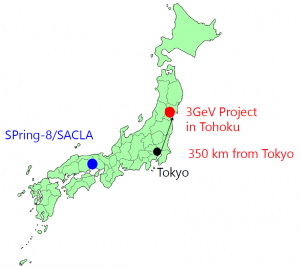
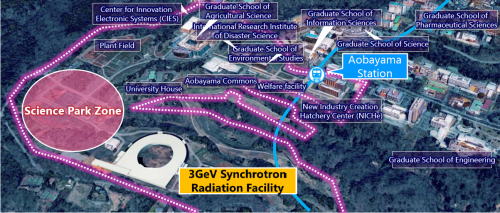
Accelerator system
The accelerator for this facility is required to be (1)compact with less than 350m circumference, (2)in stable top-up operation combining high performance linear accelerator and new injector technology, and (3)at high cost performance to realize stable and reliable light source along with brightness.
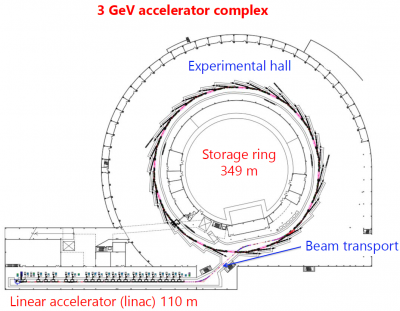
4-bend achromat lattice structure is used for low emittance with short circumference. The horizontal beam size at the undulator center is 1/3 of SPring-8.
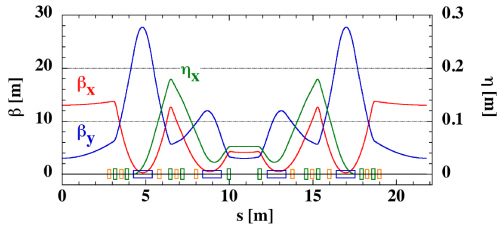
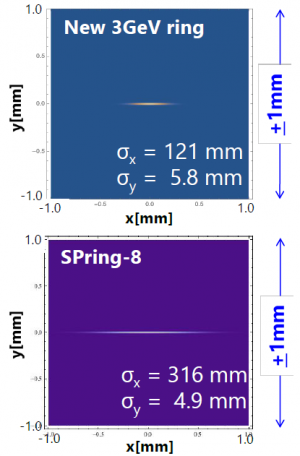 #"
#"
The detail Accelerator Design Report can be seen here.
Beamlines
In the first phase, we are planning to construct 10 beamlines in view of (1)effective use of the low-emittance light source, (2)needs of academia and industries, and (3)complementary roles to existing synchrotron facilities in Japan.
4 out of the 10 beamlines will allow access to highly brilliant tender X-rays from 2 to 5keV or higher for the purpose of X-ray coherent diffraction imaging and X-ray operando spectroscopy. The rest are soft-X-ray beamlines covering an energy range from 50eV to 2keV, devoted to various spectroscopy experiments.
The brilliance and photon flux in this energy range are expected to be 10-100 times as high as those available at SPring-8.
